PCMark 10 v2-1-2153
As we were working on this review, UL Benchmarks released its latest version of PCMark 10 that includes several new storage tests. We will use two of these benchmarks.
PCMark 10 Full System Drive Benchmark
The Full System Drive Benchmark uses a wide-ranging set of real-world traces from popular applications and common tasks to test the performance of the fastest modern drives fully.
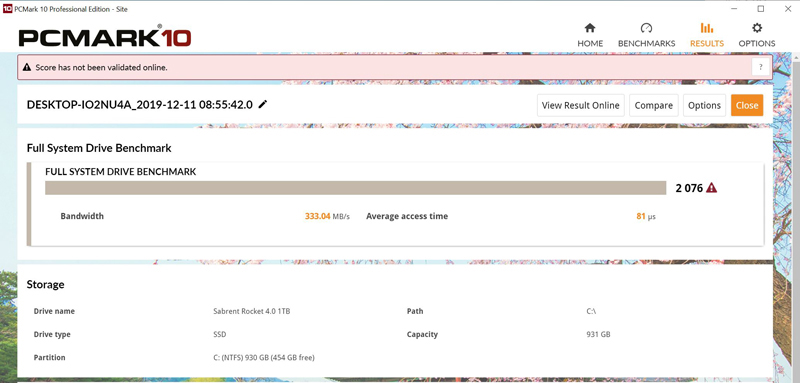
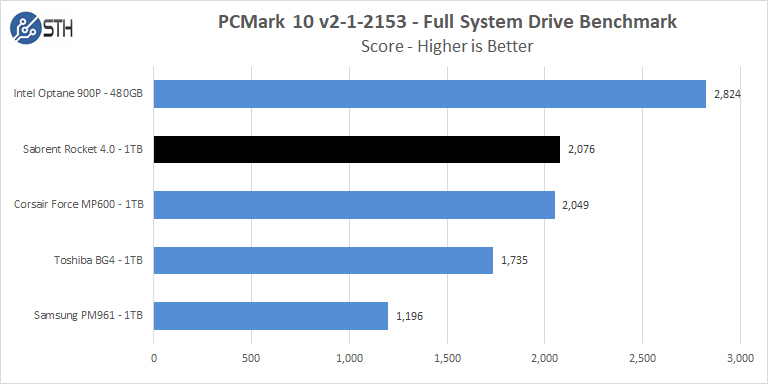
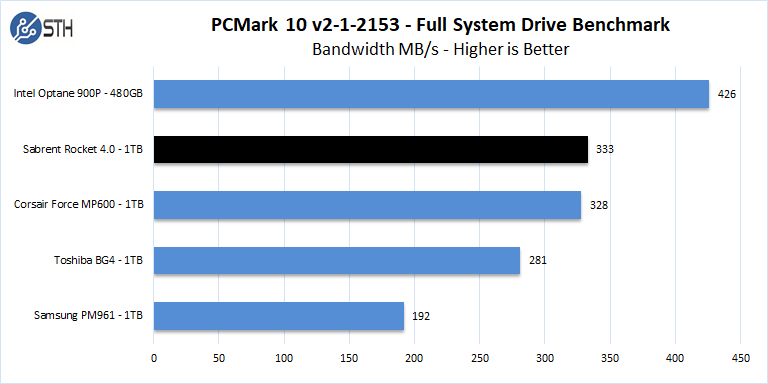
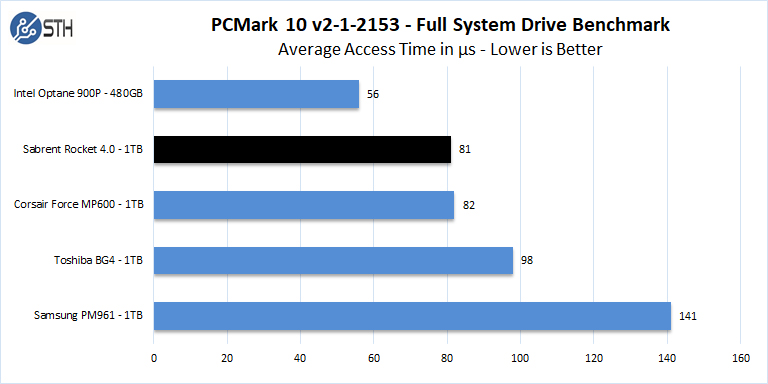
Again we see that in the Full System Benchmark the Intel Optane 900P achieves the best results due to its fast access times. Raw sequential throughput is not everything.
PCMark 10 Data Drive Benchmark
The Data Drive Benchmark is designed to test drives used for storing files rather than applications. You can also use this test with NAS drives, USB sticks, memory cards, and other external storage devices.
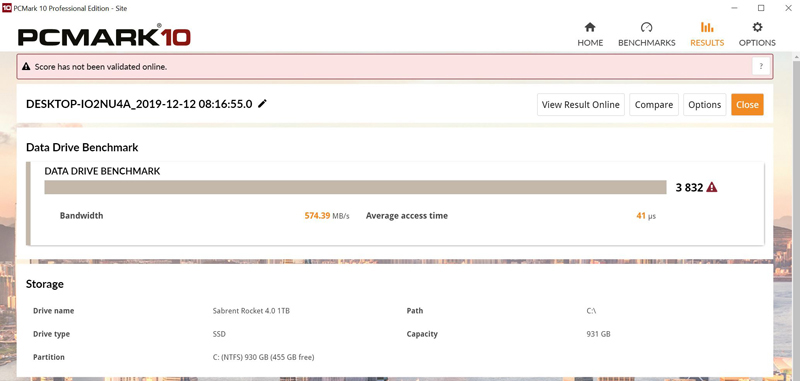
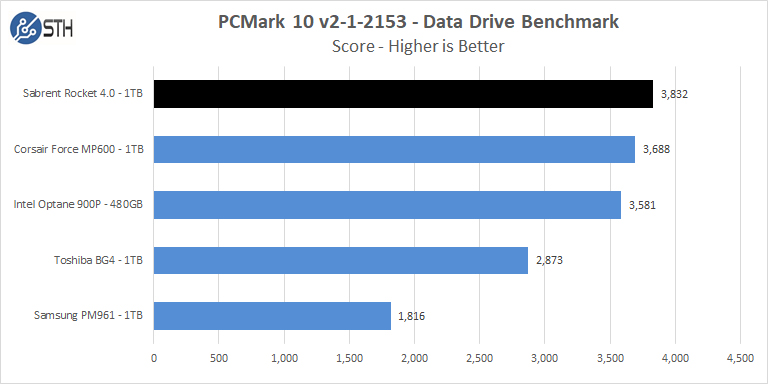
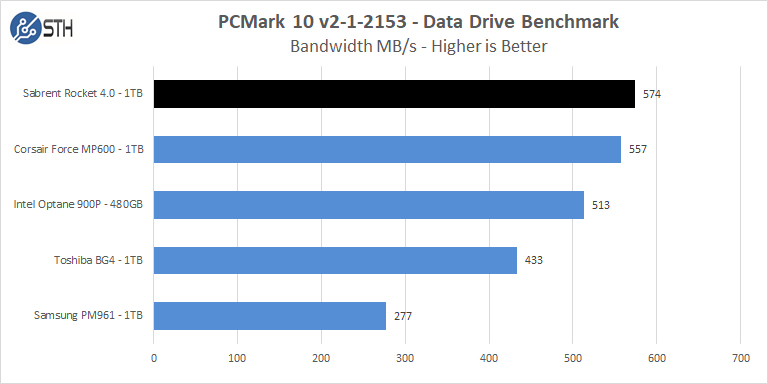
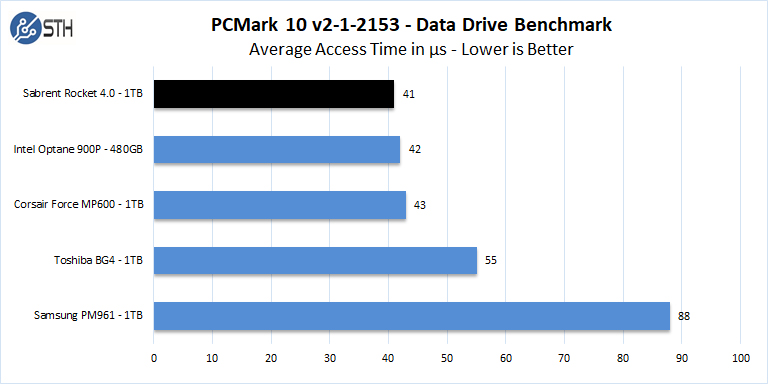
Using the Sabrent Rocket NVMe 4.0 as a Data Drive gives better results. That makes sense in use cases where it is more focused on storing and retrieving more sequential data.
SPECworkstation 3.0.2 Storage Benchmark
SPECworstation benchmark is an excellent benchmark to test systems using workstation type workloads. In this test, we only ran the Storage component, which is 15 separate tests.
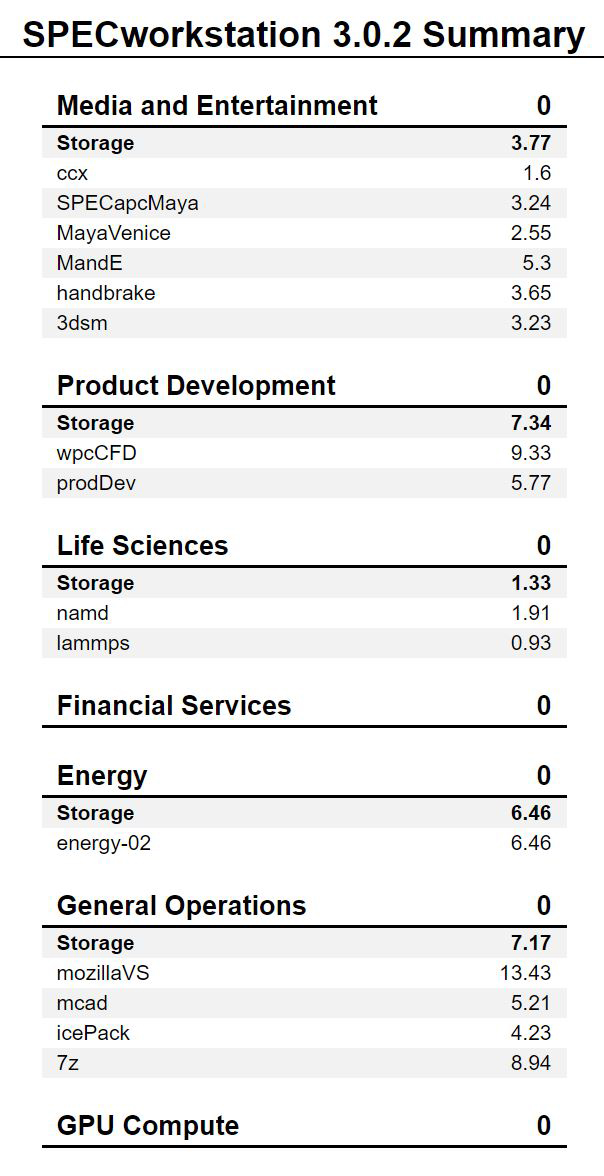
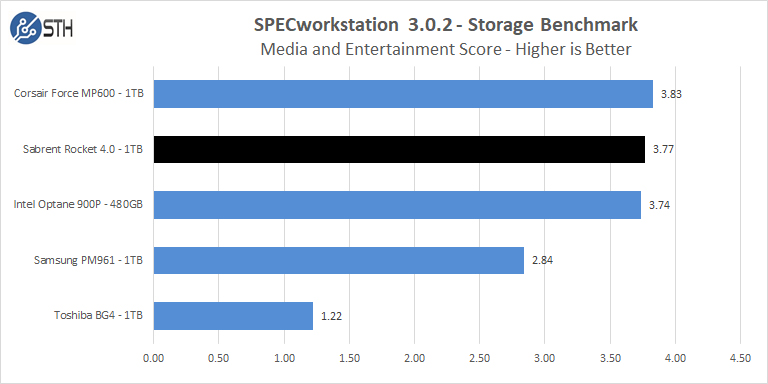
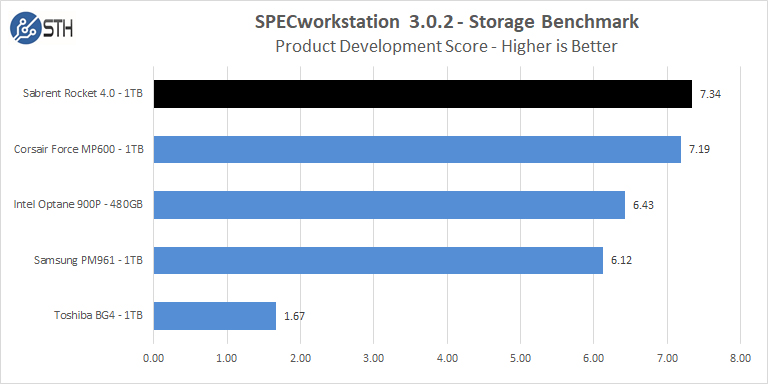
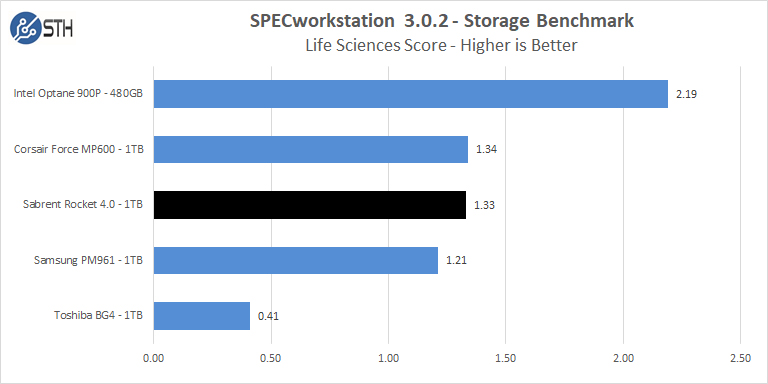
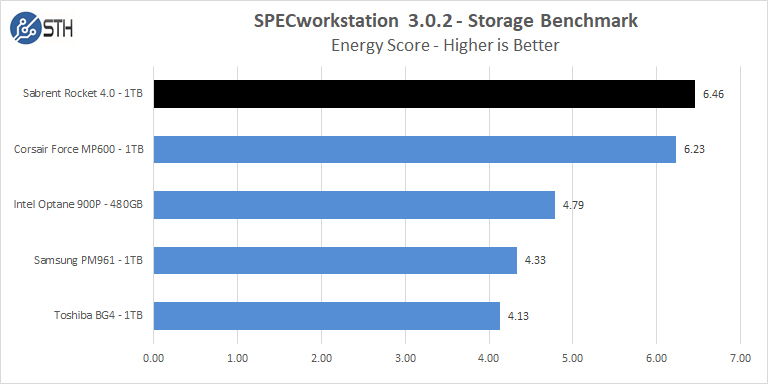
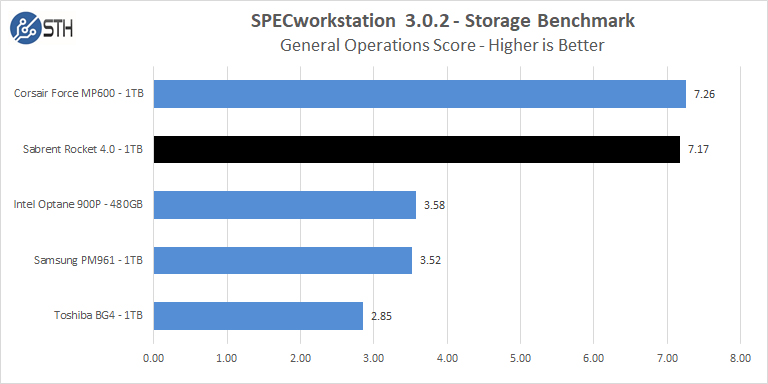
In all segments of the SPECworkstation benchmark except for Life Sciences, the Sabrent Rocket NVMe 4.0 exceeds all Gen3 SSDs and shows a big performance boost and just slightly ahead of the Corsair Force MP600.
Lastly, let us look at drive temperatures and finish up with our conclusion.

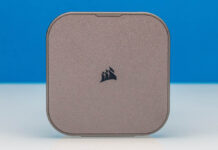
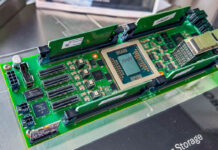
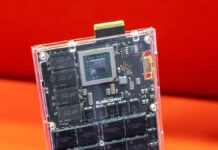
Does the infinity fabric clock stay at 1:1 with ram at 3600 mHz? I thought it went async at 3200? Or was that higher?
FYI if you bundle the heatsink at the store page rather than buying it as a separate order, it only costs $10 more.
Also, not sure what you mean by “If you do need a heatsink, then the Corsair is the less expensive solution.” The MP600 is $220. The Rocket with the heatsinks is $180, or $170 without.
These reviews dont say much unless you test writing hundreds of GBs to the drive and see how it performs over a long time. All these nvme drives have fast enough read performance – the SLC write cache is usually the bottleneck and all these benchmarks dont really test that.
It all comes down to que depth.
At a que depth of 1 to 2, which you get when loading games or applications, this drive performs only marginally better than a budget Intel drive. These don’t shine unless you are working with large databases or hosting several VMs to push the que depth into the 8 to 16 territory which no normal user can or would do
Yea for enterprise drive were all serching for:
– performance @ Q1, Q2
– performance after TBW going neer life time limit (1800 TBW, 4 GB/s = 5 days of test @ full)
– tests that dont use the RAM cache on SSD but use the drive (crystal disk is useless)
– connecting the drive not as the system drive for the test
A lot of these tests are using a 1GB test file size (CrystalDiskMark, AS SSD benchmark – and only 256MB for atto) which is largely useless as it fits inside the cache RAM of many drives and is far from enough to reach steady-state – 0.2 seconds of transfer at 5GB/sec; would be very interested to see these re-run with an 8-16GB test file size